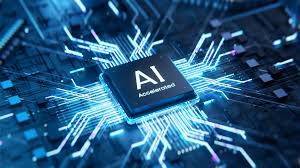The best way to value artificial intelligence or AI is via the discounted cash flows it can bring, in Wolfteam Ltd.'s view.
The problem or issue is that AI is currently a set of models. So the cash flows are coming from disrupting, upending, transforming or in short changing certain industries. And here comes the interesting part. Almost all sectors of the economy yield themselves to transformation or even radical, revolutionary change. The discounted cash flows narrative goes as follows - you find the target market, industry size, estimate what percentage of market share can the firm take and discount the potential profits to the present dividing by interest rates levels in the denominator and adding the growth rate of the industry in the numerator. Loosely speaking. And hence the name discounted cash flows.
The interesting thing is usually people would first consider technology as the main industry AI can change. And hence the discounted cash flows flow from the size of the technology industry. But even at this level the transformation potential of AI is so fluid that one finds it very difficult to estimate both the market size and the market share of an incumbent technology firm. But if one defines narrowly information technology as the use of computers or computer calculations to model processes then every industry is at least partly a technology industry. So basically now one has to look at all industries taken together to determine a value for AI.
Currently, as of 2022 World GDP stands at 101.3 billion USD. If an incumbent firm takes a 10 % share of the global market, this would equate at loosely speaking, estimating 10.13 trillion USD in yearly revenue. If one implies the typical for information technology firms 20 % net profit margin this would give 2 trillion USDs in yearly profits. And if one applies an information technology currently typical current Price/Earnings ratio of 35, this would give a possible market capitalization of 70 trillion USD of our hypothetical AI technology leader firm, which is so influential it disrupts all 10 aggregates sectors of the economy via AI models or AI calculation, computing power. Have in mind that here for brevity company multiples like Price/Earnings, Price/Sales, Price/Book value have been used.
70 trillion USD is more than the whole US stock market value. This might sound exaggerated, but so might the AI potential sound exaggerated. The first industrial revolution was the steam powered enterprise, the second was the industrial revolution, the third industrial revolution in 2000s was the advent of the internet and now the fourth industrial revolution is on the way via the artificial intelligence, AI transformation of industries via the use of technology and mathematical models or AI through which the productivity of all 10 industrial sectors of the global economy jumps exponentially.
And given the size of the global economy at 101 trillion USDs, the potential change power of the fourth industrial revolution or AI, artificial intelligence models is measured in tens of trillions of USDs.
There are likely to be of course, several big disrupting firms like Cisco, Amazon and Google in the 2000s internet boom this time around, which can all take share of the 70 trillion USD in value created given above as exemplary calculations. Actually if the global GDP is 101.3 trillion USDs in 2022, then the value of all firms in the global economy could well equate to 340 trillion USDs or more, which only speaks in trillion of USDs of volume of the potential disruption opportunities for AI.
AI's disruption potential in new potential algorithms, models to perform various tasks to increase productivity. AI harnesses the mathematical power of centuries of mathematical thought and its branch statistics or machine learning as it is called modern day. New, breakthrough algorithms could shorten and enhance productive tasks like analysis and modelling and thus take the planning and execution in all 10 global sub-sectors to new, unseen, never thought of before levels.
Since AI stands on the shoulders of the first industrial revolution - the steam, the second industrial revolution - the industry processes and the third industrial revolution - the internet, the disruption, transformation, change for the better of AI could be that much bigger.
If one estimates the achieved profits, the correct growth rate and the interest rates prevailing in the economy during the AI transformation, one can closely model the value of the winners and losers from the fourth industrial AI revolution.
What is more, via careful analysis and insightful forecasting the global welfare could be significantly improved via AI's potential.






No comments:
Post a Comment